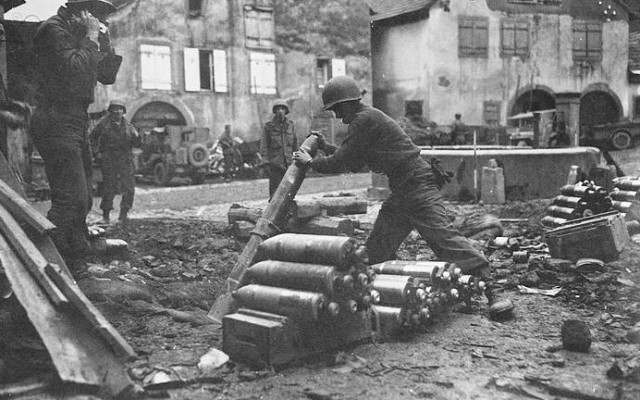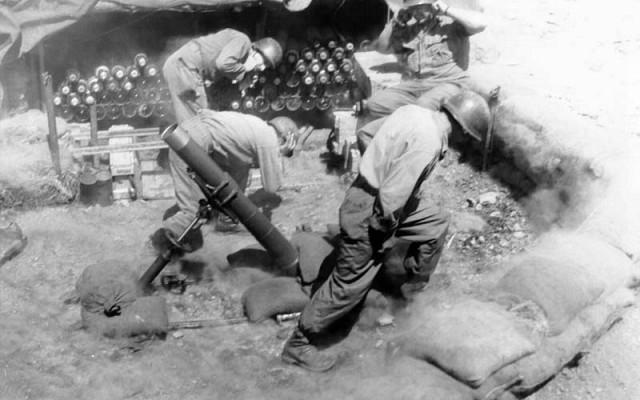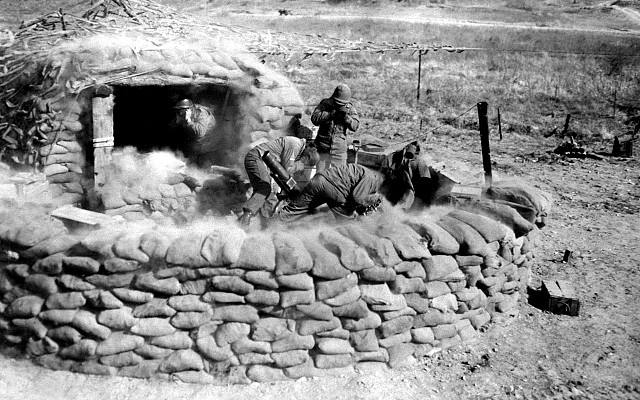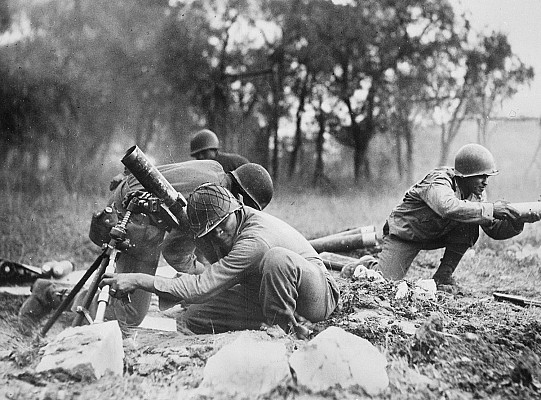107mm M2 Chemical Mortar
4.2-inch M2
Overview
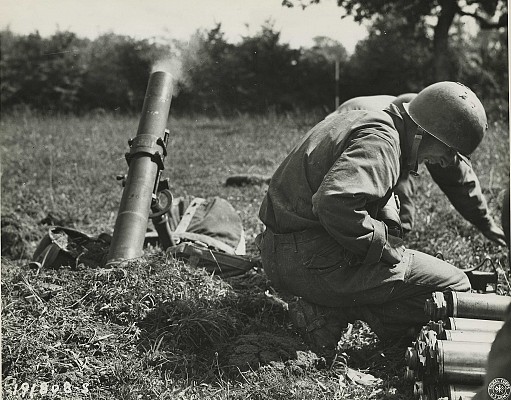
107mm M2 Chemical Mortar
US forces firing smoke shells at a German position in 1944.
Source: National Museum of Health and Medicine -
© GNU Attribution Share Alike license
1943 (4.2-inch M2)
Chemical mortar
Description
Introduction
The M2 is a conventional muzzle loaded rifled 107mm mortar. It was developed in the USA in the 1920's. At first it was only used to fire chemical rounds, but during World War 2 high explosive rounds were widely used. In the 1950's it was replaced by the M30 in US service, which is much heavier and provides a much longer range.
Design
The M2 is a conventional muzzle loaded rifled mortar. It is based on a square baseplate, a standard on a small rectangular plate and two rods connecting the two. The sight unit is attached near the muzzle.
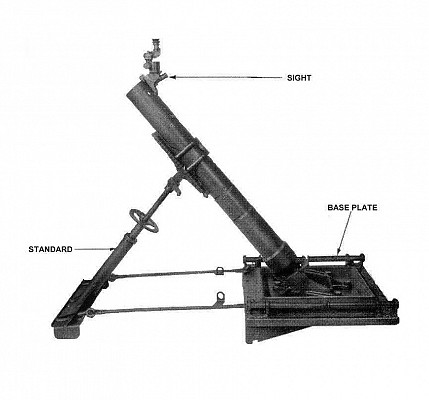
107mm M2 Chemical Mortar
Excerpt from a US field manual denoting the parts 4.2-inch M2 mortar.
Source: www.rt66.com -
© Copyright lies with original owner
Firepower
The M2 fires a variety of 107mm shells out to a maximum of 4 km. Ammunition types include chemical for mustard gas and white phosphorus smoke. During World War 2 a high explosive shell was introduced, which became the main ammunition type. The practical rate of firs only 5 rounds per minute. The maximum rate of fire is 20 rounds per minute, but only for a very short burst of fire.
Mobility
With a weight of only 150 kg the M2 was a relatively light mortar for its caliber. When disassembled it can be carried over short distances by its crew. It is normally moved using a two wheel handcart. Several tracked and half-track self-propelled mortar mounts for the M2 were developed, but none of those was adopted for service.
Users
The main user of the M2 was the United States, which used it extensively in World War 2. Many nations adopted the M2 after World War 2 when US stock became available. Nowadays it is obsolete and only very few remain in reserve use.
Variants
Details
Media
Related articles
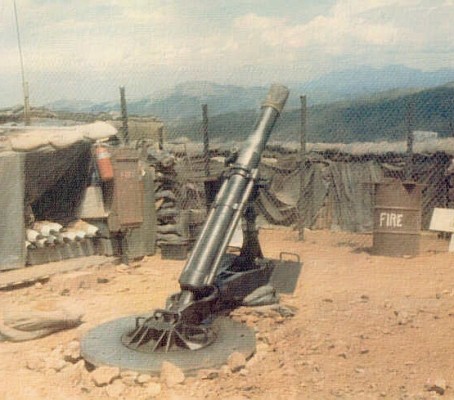
107mm M30
The 107mm M30 was developed to replace the M2. It is a more capable weapon with longer range and higher rate of fire. This comes at the cost of being about twice as heavy.
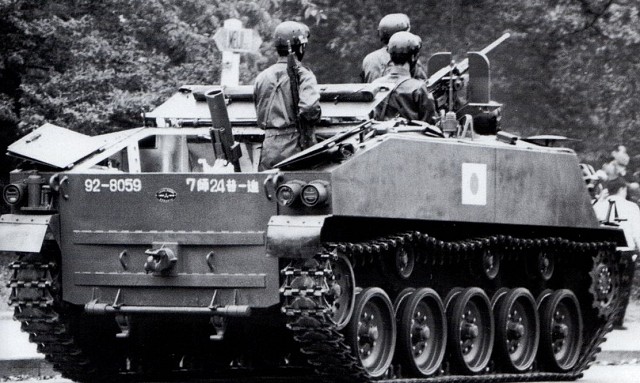
SX 60 self-propelled mortar
The Japanese SX 60 is a self-propelled mortar armed with the 107mm M2 mortar, which can be fired from the rear compartment.
